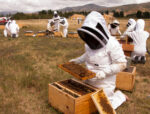Where’s the meat? Employers and governments should have seen this supply crisis coming
Ema MoolchandPhD Candidate, RMIT University Shelley MarshallAssociate Professor and Director of the RMIT Business and Human Rights Centre, RMIT University Australian Day barbecues are under threat as Omicron infections continue to cripple meat-processing operations. Most off the menu are chicken dishes. Australia’s biggest poultry processor Ingham’s (with a 40% market share) has had to stop producing some items and curtail production of others. It’s affecting clients such as KFC, and supermarket meat shelves are largely bare. The Australian Chicken Meat Federation said last week breast fillets, drumsticks and chicken wings will be hard to find for at least several weeks. The response of employers and government has been to relax health protocols for meat workers, reducing isolation times and keeping them on the line if they have been in contact with someone infected with COVID-19, or indeed even if they have the virus themselves. Teys Australia told COVID-positive staff at its Naracoorte beef abattoir in South Australia on January 9 they were required to work “as normal unless you are feeling unwell”. The Australian Meat Industry Employees Union warned this would see all 400 workers at the site infected. Woolworths, concerned about the bad look, suspended supplies from the abattoir (which resumed last week). This crisis in the industry was entirely predictable. Employers and the government should have seen it coming. Now, having failed to pursue reforms that could have helped mitigate it, they are grasping at quick fixes that compound the underlying problem. It’s as if nothing has been learned from the outbreaks of COVID-19 in meat-processing facilities in Australia and elsewhere since 2020. Meat works as transmission hotspots In 2020, meat-processing facilities ranked alongside cruise ships and health-care facilities as hotspots for COVID-19 transmission in Australia. Abattoirs were the major initial source of infections for the June infection wave in Melbourne that led to Victoria’s 112-day […]










